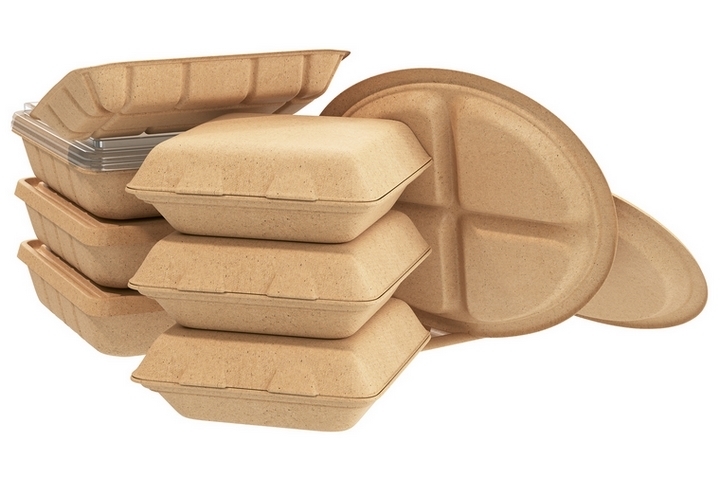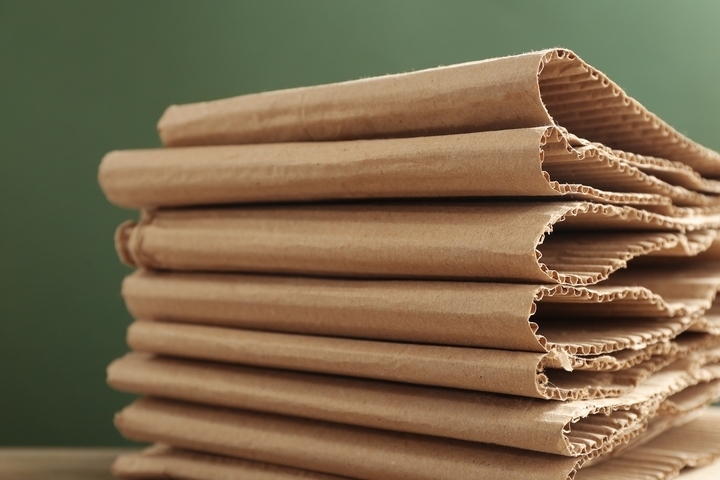We all want to do our part when it comes to the environment. If you own a business or make decisions on behalf of one, you may feel an even greater responsibility to make careful choices. The way a company manufactures, packages and transports its goods can have a significant impact on the environment.
If you are trying to figure out how to make a change for the better, consider starting with your shipping process. Chances are, if you make and distribute a product to consumers, you likely rely on traditional shipping methods and materials.
Thankfully, times are changing and there are plenty of alternatives to plastic packaging that might suit your business perfectly.
We’ve put together eight alternatives to plastic packaging that you might want to consider:
Alternative #1: Recycled Packaging
 There are a growing number of reliable alternatives to plastic packaging. If your business sends products in standard shipping shapes and sizes, you are sure to find a wide range of boxes, envelopes and other containers to suit your needs. Upcycled or recycled packaging reduces the environmental impact of getting your product in the hands of your consumers.
There are a growing number of reliable alternatives to plastic packaging. If your business sends products in standard shipping shapes and sizes, you are sure to find a wide range of boxes, envelopes and other containers to suit your needs. Upcycled or recycled packaging reduces the environmental impact of getting your product in the hands of your consumers.
If your products don’t fit easily into standard packaging, consider using custom size options for shipping. You may save money on shipping costs by reducing the overall weight of your item and, even better, your customers will likely notice your efforts to cut down on waste and excess material.
Alternative #2: Organic Materials

Another basic improvement you can make to your shipping model is to opt for organic materials. Organic cotton, soy silk and hemp, for example, can be used for internal packaging. Materials like these not only feel luxurious, but let your customer know you care about your carbon footprint. Be careful when you choose organic products, however, as not all materials are fully compostable.
Alternative #3: Corn and Cornstarch
 You might be surprised to discover these kitchen staples are making significant progress as alternative packaging materials. In fact, they are proving to be versatile and strong. Derived from corn or maize plants, they have plastic-like properties that can be substituted in several cases for products that have traditionally relied upon plastic.
You might be surprised to discover these kitchen staples are making significant progress as alternative packaging materials. In fact, they are proving to be versatile and strong. Derived from corn or maize plants, they have plastic-like properties that can be substituted in several cases for products that have traditionally relied upon plastic.
Alternative #4: Seaweed to the Rescue

Seaweed has made a recent appearance on the alternative packaging stage. It shows great promise as an alternative to plastic, both for end-use products such as bottles and for packaging materials. Seaweed is organic, sustainable and widely available, giving many hope that this raw material can help reduce the global impact of shipping products around the world.
Alternative #5: Not-Quite Paper Products
 If your shipping requires the use of paper, there are several emerging technologies that will help you change the way you view packaging materials. From sustainable kraft paper to innovations such as stone paper—yes, it’s true—your packaging can be supplemented with near-paper products that work as effective plastic alternatives.
If your shipping requires the use of paper, there are several emerging technologies that will help you change the way you view packaging materials. From sustainable kraft paper to innovations such as stone paper—yes, it’s true—your packaging can be supplemented with near-paper products that work as effective plastic alternatives.
Alternative #6: Mushroom Packaging
 Inexpensive and eco-friendly, mushroom packaging is made from agricultural waste that cannot be used as a food source for humans or animals. Mushroom packaging is best used for smaller, light-weight items, but it biodegrades quickly and can be composted easily.
Inexpensive and eco-friendly, mushroom packaging is made from agricultural waste that cannot be used as a food source for humans or animals. Mushroom packaging is best used for smaller, light-weight items, but it biodegrades quickly and can be composted easily.
Alternative #7: Alternatives for Food Packaging
 If your business makes and ships food products, you may use cellophane in your day-to-day operations. There are new alternatives to internal plastic packaging, including wood pulp cellophane, which is uncoated, semi-permeable and can be found as a certified, biodegradable product.
If your business makes and ships food products, you may use cellophane in your day-to-day operations. There are new alternatives to internal plastic packaging, including wood pulp cellophane, which is uncoated, semi-permeable and can be found as a certified, biodegradable product.
Alternative #8: Biodegradable Packing Peanuts
 While Styrofoam peanuts have been standard filling fare in the packing industry, this loose-fill material is hazardous to marine life and our food chain. Fortunately, there are finally alternatives to this familiar foe, including biodegradable, sealed air peanuts, which are 100% recyclable.
While Styrofoam peanuts have been standard filling fare in the packing industry, this loose-fill material is hazardous to marine life and our food chain. Fortunately, there are finally alternatives to this familiar foe, including biodegradable, sealed air peanuts, which are 100% recyclable.
Which plastic packaging alternative should you choose?

Because the packaging industry is evolving, it is important to find a provider who shares your desire to make eco-friendly choices. If you work with a shipping solutions company, make sure they can help you set up effective, sustainable end-to-end solutions. A wholistic approach will help you build eco-friendly decisions into your brand and daily operations.
Using eco-friendly packaging is good for the planet and your brand. But as you strive to do better it is important to do your research. Many well-intended businesses, for example, may spend money on petroleum-based products designed to degrade faster than traditional plastics. Unfortunately, these are not capable of actually decomposing, but instead are transformed into microplastics that are harmful to the environment and our food chain. As you begin your research for alternatives to plastic packaging, look for options that are sustainable and ultimately, compostable.
Whichever options prove best for your company, be sure to bring relevant details into your brand strategy, including your marketing materials. Hopefully, your customers will be as excited as you are to support eco-friendly packaging solutions.




